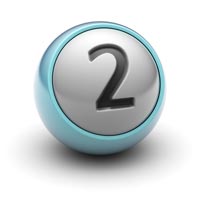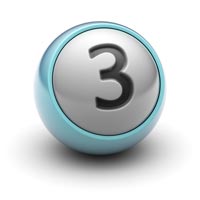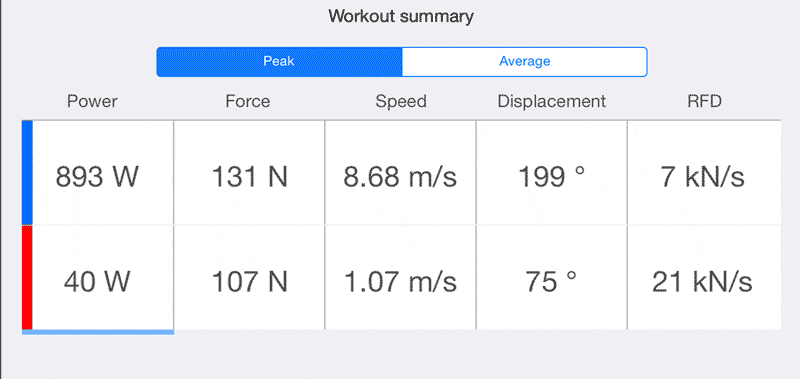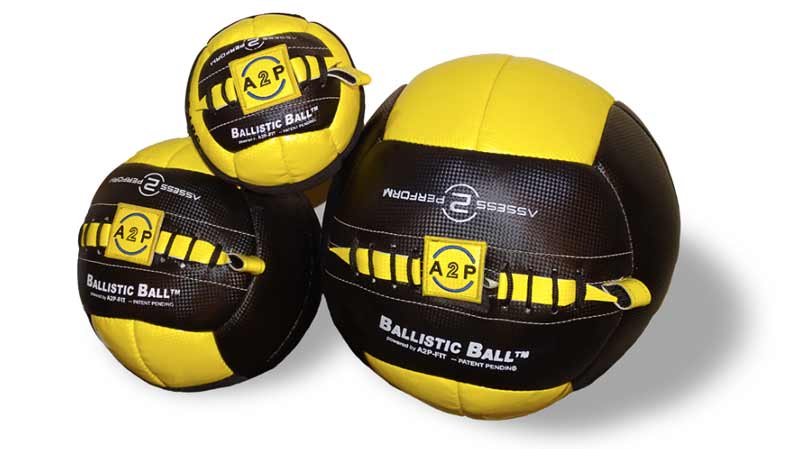
By Carl Valle
Medicine ball training is nothing new, and because the training tool is hundreds and hundreds of years old, we assume that the evolutionary process of athletic development should have made medicine ball training more standardized. The truth of the matter is that like any training, some principles and guidelines are often lost and assumed to be commonsense. Several mistakes happen with medicine ball training with young coaches, but because medicine balls are tools for training for sports as opposed to being used in an actual sport, less attention is invested in them. Unlike weightlifting, in which athletes compete at the Olympics every four years, medicine ball training doesn’t receive the research and coaching investment. Another problem with medicine ball training is that provided benefits range from early rehabilitation to explosive power testing, which makes instruction in it a difficult responsibility. Coaches must be familiar with all of the exercise options, ways to include it into different training programs, evaluate it for testing conditioning and power, and understand contraindications with injured athletes. A medicine ball is exactly what it sounds like; it is a dose of input to the body ranging from one pound to over five kilograms. In this article, we will look at the common mistakes in training, even those stemming from experts, and will dissect why they are a problem. In addition to identifying mistakes, we will create a solution to the problem, point to another option, or suggest not addressing the need with the equipment.

Your Technique Needs Some Work
If the average Joe were to pick up a medicine ball, he would most likely conjure an image of some sort of boxing exercise involving sit-ups and passing the ball to a trainer. Due to the versatility of the ball, it’s usually thought of as a core or torso exercise “enhancer,” meaning it’s a way to add load easily to conventional exercises. I wish it were that simple – that adding weight would make any exercise better or allow for a convenient progression. Some equipment, like weighted vests, naturally overload the entire body, creating a nice increase in intensity, but medicine balls are different. The goal of medicine balls is to create a new demand, and not just a greater demand. If the exercise you are doing with a medicine ball and can be replaced with a weight plate, rethink the inclusion of a medicine ball. Medicine balls should be used to overload the pattern, not just achieve a gross overload of the body. While the differences are not radical, medicine ball training needs to be thought of as a specific overload tool, rather than a body overload option. Doing my own experiments with common exercises, medicine ball training for torso- or core-strength, should be thought of as a way of creating declarative and re-accelerative contractions that are complex enough to transfer generally to function, but not too specific that skill training would be wiser. Medicine ball training usually involves grasping, but swimmers and divers use their feet to perform the exercises. Twenty years ago, the core muscles were glamorized, but now that the dust has settled, a healthier perspective is that core muscles should make up part of a training program, not the majority of one.
Most programs employing medicine balls involve a series of exercises to strengthen the core, and when motion capture and Surface Electromyography (sEMG) are used, the exercises need to have higher velocity and the leg positions need to be more stable. For example, a 200 pound NFL cornerback may be able to do 120 throws in 90 seconds, but the amount of work done to overload the oblique system may be so small that he would be better off doing bridging work. But how does one fix this? Simple, learn from throwers in track and field. Why? Many standing core exercises are staples and should be for an array of reasons. Coaches need to start learning from track and field throws coaches, not just from sprint and jump coaches. One key area of throws is that the front leg usually blocks or provides a stable platform to transfer energy; the summation of forces is a beautiful coordination from the feet up, through the upper extremities, and through the spine. Static or purposely isometric actions at key time periods allow for rapid contraction of the trunk, provided the leg strength and timing of the action is optimal. To recruit more motor units of the core, think about the legs anchoring your pelvis throughout the exercise. A sloppy lower body will be unstable, and core muscles will not have the platform to recruit at higher levels.
Overhead Throws — I use extremely light balls for overhead throws, and, at times, I have used undersized soccer balls for even advanced athletes. Most athletes and coaches that perform overhead throws can learn from the javelin athletes who stay healthy every year and focus on using joint systems properly to groove the movement, rather than to overload the muscular system. I rarely suggest being conservative of loading movements because of the current fear mongering and the trends focusing on motor learning over actually getting work done; overhead throws should be safe and sane. Watch for lead leg blocking and acceleration of the spine through the hands.
Side Tosses — If your side throws look like you are shoveling snow or, for our warm weather friends, shoveling sand, you are relying on lumbar flexion strength rather than rotational power. To fix this, one must start with how to receive a throw from a partner or a wall and focus on staying tall and keeping the ball closer to the center of mass. As the ball is received farther from the body, the mechanics of a catch encourage the weight to bend the athlete over. Athletes can learn from baseball catchers and frame the catch and bring it closer to them so one can focus on twisting the shoulders and rotating from the thoracic zone area. The lumbar spine is designed to rotate to dissipate forces, but exploiting that range is dangerous. Confusion over the last ten years increased because of several authors believing in artificially moving from different zones of the spine instead of focusing on the design of the entire body, thus losing the ability to provide alternative options. Keeping the hands on the side of the ball with legs that are in a static squat really reduces compromised joint motions.
Underhand Scoops — The erectors of the spine are thought of as muscles we want to avoid strengthening, and the notion has some pitfalls. Underhand scoops, or diaper throws to some, are lower back-driven and should be adjusted to be more leg-driven. Instead of holding an isometric leg action to overload the core, the opposite is true with underhand scoops. The legs want to be moving, and the core is a more isometric and force-coupling agent. We are not trying to overload the back or avoid muscular contraction of the lower back but to organize a movement that prepares the region for activities it must perform later. A good underhand scoop uses the momentum of the legs, raising the torso up rather than using the lower back and straightening up like a fast deadlift. The first pull of the clean in weightlifting is an excellent guide for doing underhand scoops properly since the hips and shoulders rise at the same rate while the legs extend. Learning to use the legs to help create the forces and keeping the lower back as more of a stabilizer instead of a prime mover is a good idea. Underhand scoops build the right type of endurance to the lower back with stabilization strength.
Chest Passes and Shot Throws — The cliché chest pass and, sometimes, the shot-put throw, are good options but are bastardized with poor technique, which happens when athletes get tired or when the technique is not introduced correctly. Chest passes involving a squatting pattern were one of the best teaching tools that lost favor when goblet squats harnessed the trend of using kettlebells. Learning to squat right will reduce injuries, but not learning to do a shot-put throw correctly can increase them. It’s good to learn from shot-put competitors and learn about injury patterns to reduce strain rates to the knee, shoulder, and wrist. Want to help teach the exercise better and reduce wear and tear? Use the tips I learned from throwers by including the following checkpoints.
- Elbows Up — Good shot throws are like straight punches, rather than “high five” slaps. A good rule of thumb is to keep the hand, elbow, and shoulder in a straight line horizontally rather than having the elbow drop. Dropping the elbow increases torque on the shoulder, especially with a heavy medicine ball.
- Push from the Palm — Excessive wrist extension in putting the medicine ball can break down the joint, and you often see shot athletes in track with wrist tape. If wrist extension is combined with crawling and other weighted movements, the wrist can take a beating, so a good idea is to have the lower palm do most of the pushing by not trying to throw in a steep trajectory. Shot-putters try to get maximal distance, while athletes strive to make secondary improvements to their bodies. The two small changes mentioned should reduce excessive motion and wrist strain. A small flick of the wrist is theorized to help with the summation of forces during the throw, but a performance enhancement in one sport is where the risk does not value the general conditioning effect on non-throwers.
- Point the Toe Forward — The front leg should point forward, in the direction in which you want the ball to go. We see this frequently in the follow-through with baseball pitchers; in this case, having the front foot straight reduces coronal torque on the knee. Having the toe forward assists in creating rotational forces from the back foot through the hip, and the snap of the pelvis accelerates the upper body and increases the pectoral stretch, thus increasing elastic contribution. An eye on the feet, not just an eye on the ball, can help coaches see where the forces are created and controlled through the entire movement of the body.

Using Junk Reps for Conditioning
The influence of Hungary and the Czech Republic with medicine ball training are erroneously causing some misinformation to Western training programs. The Olympic programs that the swimmers and multi-event athletes partake in incorporated routines of a high volume of throws. American coaches, hungry (no pun intended) for anything foreign, usually adopt practices from written texts that get information second or third hand. Instead of going directly to the athletes and coaches and observing what they do, the coaches usually rely on other coaches who are apparently reading from expert authors. For nearly fifty years, the same practice over and over is repeated, and countless athletes have been ruined or failed to improve from conditioning programs that are out of context. For years, coaches have looked at the term “work capacity” and assumed it meant endurance, when in reality, it is more about improving the ability to handle training volume rather than the ability to perform a skill longer. Another pop science trend that has hurt sports performance is Malcolm Gladwell’s 10,000 hour rule that polluted the minds of coaches to think that expertise or mastery was as simple as putting in time and expecting the next Tiger Woods. The backlash of the 10,000-rule was just as bad as the overreaction, since many coaches failed to, at least, respect the notion that repetition is still necessary for learning, and a few magic cue words or special exercises can fast forward improvement. A healthy perspective is to be focused in the short run, and patient in the long run.
In the past, I used total throws, duration of exposure, and eyeballing technique to evaluate the workload of medicine ball routines. Medicine ball workouts should be seen as very low intensity plyometrics. Instead of counting ground contacts, an extremely crude approach for estimating work with jump training, wattage may be a good starting place. Since athletic medicine ball work incorporates so many muscles, anatomical load is not as necessary as the goal of medicine ball training is usually general in nature. Conditioning with medicine balls is a year-round option, but most of the distribution is done earlier during the training season in the GPP (general preparation phase). A smart way of thinking in relation to work capacity is that absolute power needs relative fitness to tolerate loading and to stoke the fires during a season. Coaches, if you think about conditioning differently, are trying to improve maximal ability in conduction to ensure that the athlete can handle the training via internal recovery. Medicine ball training will affect an array of adaptations to the body, and conditioning the muscular system to improve internal biochemistry of enzymes is likely to be the primary purpose. I have done several lactate and other physiological tests on medicine ball training. What I have learned is that medicine ball training is not conditioning; it is more about complementing work capacity. Even if an athlete performs an insane or monster workout, they are never going to be able to get a performance transfer. Early conditioning starts from ground zero and may move the needle with fitness, but don’t expect a 4th-quarter comeback advantage with a team sport because you did a few weeks of medicine ball workouts.
Conditioning can mean a lot to difference coaches and athletes, and medicine ball training, while versatile, has limits to each corresponding benefit. Medicine ball training is part of a workout, not a workout in itself since most routines are 10-20 minutes. Still, adding in a short period of time with medicine ball training, one can address several areas needing to be touched. I see four main areas to which the medicine ball can contribute, but not address fully on its own.
- Body Composition — Calories and power to weight ratio is not exciting, but for athletes, it works and is timeless. The challenge with some athletes is keeping lean and doing a few quick circuits a few times a week to keep fat levels down.
- Enzyme Conditioning — Due to the work to rest ratios and duration of medicine ball training, don’t expect the cross training from the modality to prepare athletes for handling the rigors of an overtime game. The specific conditioning benefits with medicine balls target muscular enzymes that are utilized during repeat bursts of power.
- Recovery Circuits — One can view medicine ball training as an indirect way to facilitate recovery by choosing an option that maintains fitness and allows for intense sessions to recuperate from over time. Coaches know that sometimes, passive rest is not an option, and medicine ball training can be added to recovery days.
- Injury Patterns — Medicine ball training is a core of general exercises that can add more work without adding more dysfunction. Medicine ball training can work around specific injuries by providing gross activities that distribute forces throughout the entire body instead of overloading a specific area only.
Using medicine ball training as a standalone option is a mistake, but adding in small modules of medicine ball training is a worthwhile investment. Coaches and athletes need to think about medicine ball training as being a part of conditioning but not a complete option by itself. A good rule of thumb is that medicine ball training should stay within 15-20% of a training session. It’s okay to use numbers of throws to a partner or wall, but a better idea is to look at the time under training with medicine ball work and keep it less than a quarter of the work done.

Not Testing Power with Medicine Balls Properly
The most abused myth of sports training may be the benefits of medicine ball training with developing power. Not that medicine ball training isn’t part of a winning recipe, but the research and some empirical evidence don’t show it to be the main ingredient. Medicine balls are great projectiles, so coaches assume that the velocity benefits of the equipment help develop power. Medicine ball training is arguably a better tester of power than developer of it. Research on baseball pitchers and hitters showed that adding the intervention of medicine ball work failed to improve throwing velocity or rotational power. Specificity, it seems from the research, is very narrow to the activity and attempts to mimic the motion or pattern, which has little value compared to simply performing the exercise. As for lower body power, medicine ball throws with jump-like movement patterns tend to produce only very marginal gains. Strangely, many coaches refer to the force-velocity curve as a roadmap to improving power. Expressing power to a modality and improving power from the same option is hardly a two-way street. Some coaches have exchanged medicine ball training erroneously with Olympic weightlifting, which is a major mistake. Using a piece of equipment that is a small percentage of one’s weight versus a load that is sometimes more than twice one’s bodyweight is not even in the same ballpark.
Using medicine balls do have some indirect benefits that may help with power development over the long haul. Being a more well-rounded athlete that can express high-velocity forces doesn’t guarantee improved performance, but not trying to improve general capabilities is a definite path to stagnation. With jump and speed testing being easily measured, the question is why would one want to use throws as a measure of power?

Figure 1: Tablet display of metrics from the ballistic ball from Assess 2 Perform. The sensors inside the ball can not only capture power indices, other metrics can also be collected for coaches wanting more insight on a player’s abilities.
Several coaches use medicine ball throws as a way to profile athletes and their training. Speed and jumping are very stubborn to improve, but training markers at least show that the training is improving. Performance markers are not always indicative of one’s ability, since very few times in Olympic sport one is tapered and ready to perform at their highest. Sometimes coaches use an array of tests to see if relationships or predictive qualities of training are trending up, and behind the back throw or back overhead medicine ball throw (BOMB). For decades, coaches have used throws to assess athlete power, and perhaps the fact that the test is a total body coordinative effort may show athletic qualities beyond just brute jumping power. Since jumping is so natural, it may not indicate improvement in training. By measuring something more trainable, coaches can get more indications of change rather than being dependent on a slow changing test like countermovement jumps.
In the past, using a tape measure was the only real way to see changes in throwing medicine balls. Track coaches would take squads out to the throwing pit and get the lengths recorded for measuring the test. Now with accelerometers and wireless technologies, coaches are able not only to get power, but various other qualities are now possible. Why is this important? Many athletes that are trying to throw for power sometimes release the ball at angles that don’t show impressive distances. Even if athletes threw for height, the angle may not be perfect either, making air time an inaccurate metric of power as well. Another problem with some athletes throwing a ball is that the wrong weight would encourage too much contribution on the lower back. By focusing on the technique of good mechanics and applied power, throws for good scores but poor transfer in athletic actions are discouraged thanks to new technologies such as the Ballistic Ball from Assess 2 Perform. Coaches and even researchers can get the data sent directly to mobile devices, removing the need to use force plates and other expensive ways to get power output from the throws. Just adding a little technology can make testing and power training a little smarter, and investing into the Ballistic Ball may get a good option for many coaches wanting to know more about their athletes.

Figure 2: The Ballistic Ball is what Scott Damman calls the “Ball with Brains.” For many years, the smart medicine ball has been under development, and the product should be available in September.
Closing Thoughts on Medicine Ball Training
Medicine ball training offers a wide range of options, but just because the tool has many possibilities doesn’t mean it doesn’t follow the traditional rules of training. The very nature of the training tool being a ball sometimes will lower the responsibility of coaches to appreciate the fact that medicine balls are a serious tool. Using the above suggestions can help coaches and athletes not take the excellent benefits of medicine balls for granted and can make sports performers fall in love with such a valuable piece of equipment.
Please share this article so others may benefit.
[mashshare]


can you throw these balls against the wall , i’m in maintenance and the walls are just block and are not made for such impact, or am i over thinking because it sounds like the whole wall moves.
In a pitching program would you do a med ball progression pre or post throwing a baseball ⚾️?